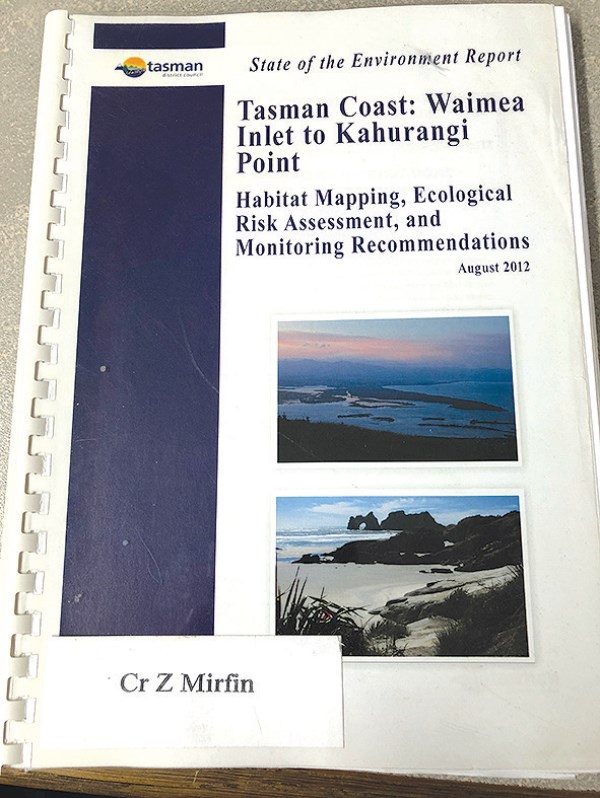
The recent Nelson City Council legal action on boat access at Delaware Bay supposedly hinges on the environmental damage wreaked by boaties who are only launching and retrieving their boats.
The adjacent local government neighbour of Nelson City Council is the Tasman District Council, of which I was an elected councillor 2010-2013, 2013-2016. Tasman District undertakes ecological assessments of territorial estuaries every ten years and these reports show some interesting trends.
Right now, I’m looking at a State of the Environment Report; Tasman Coast: Waimea Inlet to
Kahurangi Point—Habitat mapping, Ecological Risk Assessment, and Monitoring Recommendations, from August 2012.
Anyway, what is really interesting about this 2012 report is that it shows that local estuaries (and most probably all around the country) are being exposed to excessive sediment deposit build-ups through poor land management practices such as forestry, farming, and urbanisation. There is too much to list here in this article but the report’s executive summary noted that, “The health and productivity of the coastal habitats, including its extensive estuarine systems, are a cornerstone of the region’s quality of life and vibrant economy, from fishing to shellfish production to tourism”. The summary listed the key coastal issues as: excessive muddiness and, to a lesser extent, nutrient enrichment of estuaries and embayments; elevated disease risk in estuaries and embayments, particularly after heavy rain; habitat loss through sea level rise, and ecological change through sea temperature and acidity change.
These issues are probably common to the Wakapuaka Estuary and wider catchment too, which also drains into Tasman Bay and has significant land modification in the form of exotic forestry, farming, and development. The 2012 Wriggle report observes under 4.2 Fine Sediments (Muds) that, “In New Zealand, deforestation and catchment development have resulted in land erosion with consequent excessive fine sediment loads accelerating the infilling of estuaries and coastal embayments. Such accelerated infilling results in prematurely aged estuaries and embayments, and a degraded ecosystem that reduces human use and ecological values”. For example, the report shows under the title “Excess Mud Destroys Coastal Habitat in Tasman” that “50% of Tasman and Golden Bay estuaries are excessively muddy (greater than 10% of the estuary area filled with soft muds). Waimea is the most affected at 55% soft mud, and Waitapu and Motupipi have approximately 25%”.
Who knows what the muddiness level in the Wakapuaka Estuary is? But it is a sure bet that a few recreational boat users are the least of the problems associated with the health of the estuary. The last massive flood and debris flows in August 2022 alone, likely had more environmental impact on the estuary than all human boat launching efforts since before the beginning of time.
Here’s a challenge to Nelson City Council: Why not do the job you were elected to do and protect the estuary from real damage and harm, instead of picking on recreational boat users who actually value the estuary and want to enhance the environmental, recreational, and community values for the future.
With Environment Court action underway the Delaware Bay Access Group Incorporated needs all the help it can get. Please donate generously to the Legal Defence for continued boat launching and retrieval rights for all.
Bank Account Number 06-0958 0210014-00













